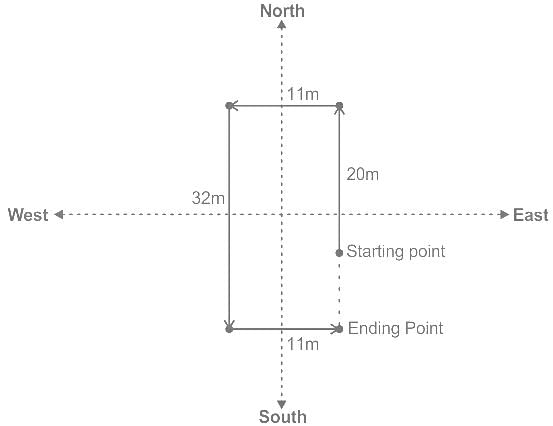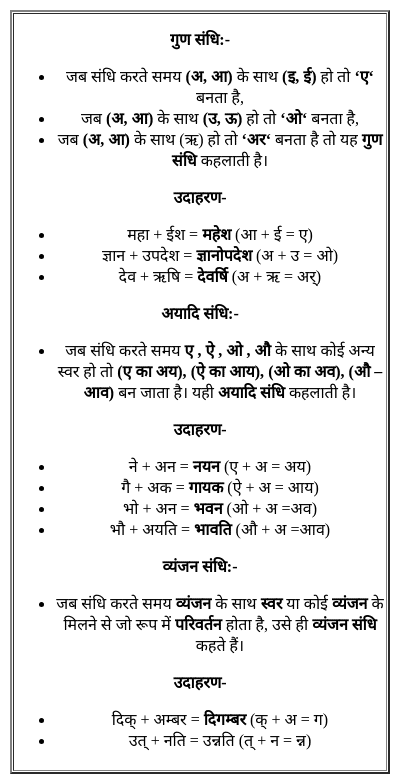DSSSB PRT Mock Test - 10 - DSSSB TGT/PGT/PRT MCQ
30 Questions MCQ Test DSSSB PRT Mock Test Series 2025 - DSSSB PRT Mock Test - 10
'Forest' is related to 'Vivarium' in the same way as 'sea' is related to:
Rima walks 20 m north then she turns left and walks 11 m. Again she turns left and walks 32 m. Finally she turns left and walks 11 m. In which direction is she from her original point?
Direction: If a Paper (Transparent Sheet) is folded in a manner and a design or pattern is drawn. When unfolded this paper appears as given below in the answer figure. Choose the correct answer figure given below.
A circular paper is folded and punched as shown below. How will it appear when opened?
Question Figure

Answer figure

A circular paper is folded and punched as shown below. How will it appear when opened?
Question Figure

Answer figure

Anil can complete a work in 50 days and Hari can destroy it in 100 days. If both of them are working together, in how many days will the work be completed?
Manish had Rs.45. He spent 3 / 5 of it on a birthday present. How much had he left?
Fill in the blanks with the correct preposition.
There are apple trees ____ the house.
Then
P: it struck me
Q: of course
R: suitable it was
S: how eminently
The Proper sequence should be:
Directions: Read the passage and answer the question based on it.
Ninety seven years old; this is the age of the oldest student in the world who graduated from a university, who has recently received a Master's in Clinical Science - 76 years after attaining his first university degree. However, as extreme as this example may seem, a question remains highly debatable: Is it ever too late to study?
Studying is one of the main tools used to gain knowledge in a variety of subjects, notions, and the world around us in general. It is the basic channel of perception of reality, which we otherwise would be unable to understand. Ignoring the opportunity to study would basically be equal to ignoring the whole world that surrounds us. Therefore, it stands as perfectly reasonable to further one's education after graduating from high school.
Higher education in the United States is viewed as a wise choice, as it invests in one's future and gains an asset that will be one's stronghold when climbing up the social ladder. Many high school graduates do not have an opportunity to continue their education right away. Therefore, when a person has already achieved a stable career and knows exactly what it is he or she wants to deepen their knowledge in, he or she has the right to continue.
With the American educational system being arguably a flexible one, you do not even have to become a full-time student anymore to learn more about the subjects that interest you. You can take a few courses at a certain university, pay the fees, and attend the classes for your own purposes.
Nevertheless, it is believed that after some point in life, it becomes too late for activities such as being a student. Choosing to be a student in many cases means you are willing and able to take on the whole package, or otherwise you risk feeling like an outcast and dropping out of school, even if the classes are interesting and the professors are fantastic. When you consider applying to a specific university after a certain age, when the above mentioned happenings become of a lesser value to you, look at those institutions that are more flexible and do not require living on campus and fully engaging in the academic and non-academic sides of university life.
Another factor that might get in the way of effective studying after a certain age is your capabilities. If you decide to finally become a student, it is implied that you have the required desire to learn, listen, and absorb the knowledge. However, unfortunately, sometimes just the desire itself is not enough. It is a known fact that with age, our memory, attention, and ability to learn may decrease greatly - studying may become a much more difficult challenge than it could have been when we were younger. At the same time, if you have the dedication, motivation, and persistence to become a student at a later stage in life, I suppose these traits will aid you in achieving your aim as well.
Studying is a necessity rather than a privilege. It should never be too late to study if a person wants to. There is no doubt that setting an expiration date on one's opportunity to learn and follow their dreams would be wrong. Despite all the analyzed obstacles that may possibly come in the way of studying, they should not become an insurmountable barrier in the path of one's self-actualisation.
Q. As stated in the passage, the author believes that after a certain age
संपादकीय और समसामयिक विषयों पर प्रकाशित समाचार-पत्र के लेख पाठक को बनाते हैं :
'कक्षा ऐसी जगह नहीं है जहां छात्र खेलें' रचना के आधार पर वाक्य भेद बताइए।
In reference to the principle of development of children, which of the following statements is/are correct?
1.Development proceeds in Cephalocaudal direction.
2.Development proceeds in proximodistal direction.
Select the correct answer from given code.
Through which of the following measures and mediums value education can be imparted to the students?
I. Speech Competition
II. Mass media access
III. Celebration of Birthdays and International Days
Ministry of Education (MOE) has started STARS project under an agreement with which institution?
Given below are two statements, one is labelled as Assertion A and the other is labelled as Reason R
Assertion (A): PWD Act, 2016 is based on the principles of respect for inherent dignity, individual autonomy including the freedom to make one's own choices, and independence of persons.
Reason (R): In India, a child has the right to get admission to any school as per his/her choice.
In light of the above statements, choose the correct answer from the options given below
Choose the correct statement.
Statement I: Portage guide emphasizes the role of classmates as the child's primary teacher.
Statement II: The portage guide is basically a home-based training system.
Which of the following is a characteristic of Chomsky’s theory ?
Which of the following pedagogical strategies does National Education Policy 2020 propose?
(i) Inquiry-based learning
(ii) Story-telling-based pedagogy
(iii) Drill and practice
(iv) Discussion-based classrooms
Which of the following is a correct match?
1. Anticipatory socialization ---Reference Group
2. Primary socialization-----School
3. Secondary socialization ---- Family

























